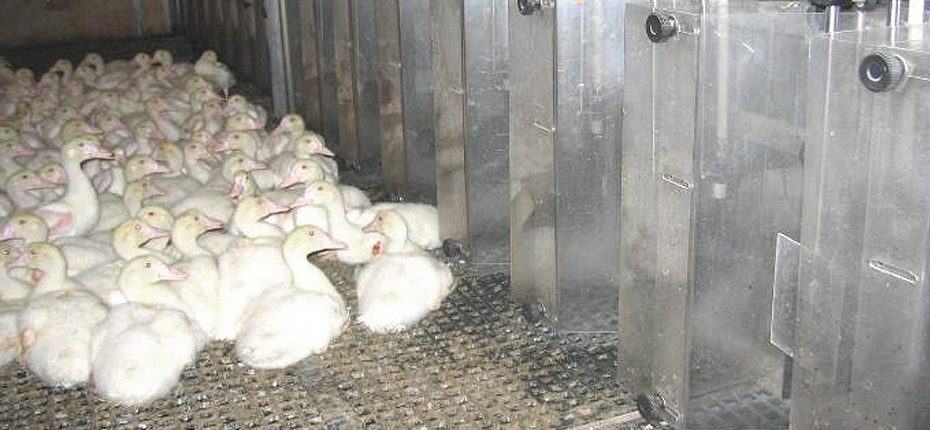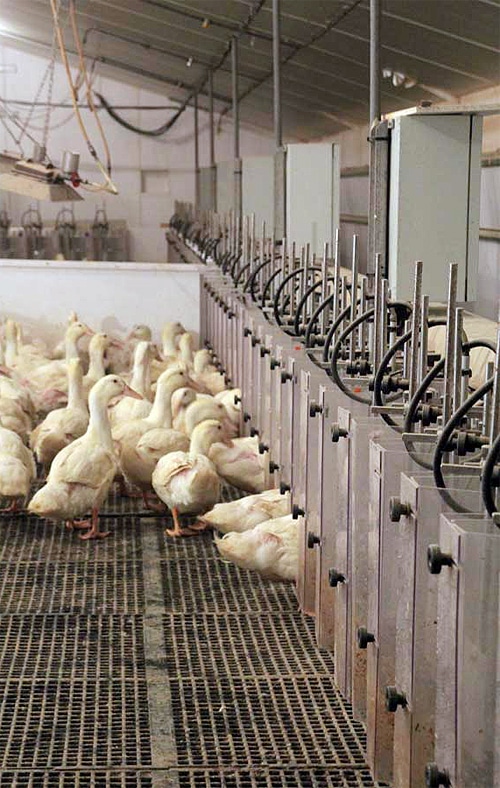OCT. 2017 - Selection for Feed Efficiency in Ducks
The global production of duck meat was roughly 4.3 million tons in 2012. It represents a valuable source for human consumption especially in Asian countries. To improve the efficiency of this business, breeding companies have been selecting for superior performance in all traits of economic importance. Selection is focused on daily gain, meatiness and feed efficiency of broiler ducks, without neglecting the number of ducklings per female housed. Improving the feed or nutrient conversion is a key tool to increase the production efficiency. Sophisticated technology to test the individual feed intake and the feeding behaviour of Peking and Muscovy Ducks, developed and used over the last decade was the predisposition and driving factor to gain success and more knowledge in feed selection.

Introduction
Feed efficiency has become more and more important for all kinds of animal production, in response to rising feed cost and awareness of limited resources and environmental issues. Therefore, individual feed intake of the birds is measured and used in selection programs. In the past, individual feed intake of meat type poultry has been recorded in single cage systems but this system is unfavourable especially for the heavier types of Pekin Ducks (Thiele, 1995). Furthermore it is far from practical environmental conditions and can not reflect the feeding behaviour under those commercial floor conditions. The modern RFID technology enables the breeding companies nowadays to record even small meals of individuals under nearly practical housing conditions. In these testing units not only the amount of feed consumed can be recorded, it opens the possibility to observe also the feeding behaviour of the ducks, with the frequency of meals and the size of a single meal (Bley, 2003; Howie et al. 2009). The availability and utilisation of these “feeding stations” accelerates the genetic progress in feed efficiency.
Material and Methods
Feeding Station
Test Duration :
- 14 – 42 Days
Density :
- 7,0 – 7,3 birds / m2
- 5,4 – 5,7 birds per nipple drinker
- 17,8 – 19,4 birds per feeder
Light :
- 16 hours light
- 8 hours darkness
Animals
- 4630 males
- 2 Pekin Duck male lines
- 2 hatches
- 2 generations (2014/2015)
- 28 days test period
Performance Parameters
- Feed Intake (FI)
- Bodyweight (BW) / Bodyweight Gain (BWG)
- Conformation (subjective grading of meatiness)
- Feed Conversion Ratio (FCR)
- RFI (Residual Feed Intake)
- RFI = FI − [a + b1 ∗ BW0,75, + b2 ∗ BWG]

Visit (Meal)*
The optical sensor detects a bird (start).
The weighing cell goes on TARA – measures intake.
The RFID is detected while birds eat and stay in front of the feed hopper.
The bird leaves the station – the optical sensor doesn’t detect the bird anymore (stop).
Information’s about consumed feed, RFID and start/stop (time) of the visit are written into the data base.
*Findings of Howie et al. (2008) confirm, that in Pekin Ducks the records of visits can be used to characterise a meal.
Behaviour Parameters
TSUM : number of meals per day
TIMEM : average meal duration
FRATE : feeding rate (feed consumed per minute)
ADF : average daily feed intake
FEEDDUR : duration of feed intake per day
Data Handling
Data of dead animals and unreliable records have been excluded.
Data have been tested for normal distribution.
Parameter estimation was done with REML package VCE 6.0 (Groeneveld, 2010).
Multi trait animal model : Y = X β + Z u + e
Where : Y is a vector of observations (performance and behaviour traits), β, u and e are the vectors of fixed, random and random residual effects respectively, and X and Z are known incidence matrices. Fixed effects are generation and time box (time period for tested animal).
Results
In special designed feeding stations performance parameter and the feeding behaviour of ducks can be evaluated. The estimated genetic parameters of performance and behaviour traits are valuable and can be use to further improve the feed efficiency and feeding behaviour in Pekin Ducks.

Bernard Alletru, GOURMAUD SÉLECTION – Saint-André-Treize-Voies – 85260 MONTRÉVERD – FRANCE : bernard.alletru@orvia.fr
Hans-Heinrich Thiele, POULTRY BREEDING & GENETICS, 21775 Ihlienworth – GERMANY ; thielehh@gmx.de